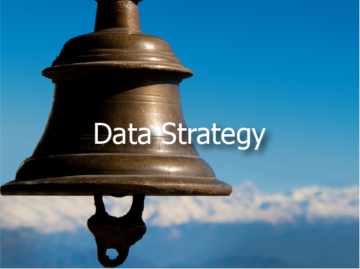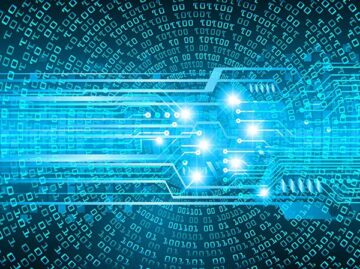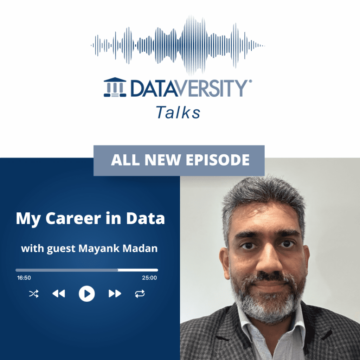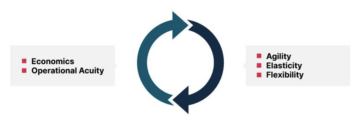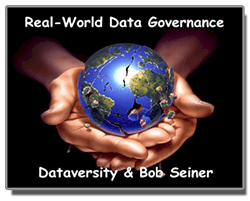
We live in an era in which business operations and success are based in large part on how proficiently databases are handled. This is an area in which graph databases have emerged as a transformative force, reshaping our approach to handling and analyzing datasets.
Unlike the conventional structure of traditional methods of accessing databases, which rely on rigid tables and columns, graph databases offer a powerful alternative. Their prowess lies in their capacity to seamlessly capture a database, compile it into a graph, and translate it into modern datasets.
While the evolution of graph databases has not been a perfect response to the limitations of traditional models, it is moving us toward a more sophisticated and responsive Data Management paradigm.
Likewise, as we navigate the merging paths of artificial intelligence (AI) and database technologies, we are moving toward a future where data isn’t just stored; it’s also smartly connected and thoughtfully processed.
Accessing insights and managing databases with AI graph is a vast topic, especially for beginners. Therefore, we have created a series of blog posts that will break down the topic into manageable parts.
In this first post, we’ll dive into the AI graph databases concept, explore common challenges, and discuss the role of AI in addressing them. We’ll uncover the potential for big changes in how we handle and understand complex, linked-up data structures by leveraging the AI in graph databases.
Understanding the Philosophy of AI Graph Databases
In the ever-evolving landscape of Data Management, the philosophy behind AI graph databases represents a paradigm shift. Unlike traditional databases that rely on static, tabular structures, AI graph databases embrace a dynamic approach.
This modern philosophy focuses on recognizing and harnessing the inherent interconnectedness of data. By adopting a graph-based model, these databases acknowledge that relationships between data points are as vital as the data itself.
This philosophy lays the foundation for a more intuitive, flexible, and relationship-centric Data Management approach. If you are still managing your database using static tables, perhaps it’s time to adopt new technologies to streamline databases much more efficiently.
What Is an AI Graph Database?
At their core, AI graph databases are a sophisticated breed of databases designed to excel in handling complex relationships within data. They are altogether different from the conventional row-and-column structure seen in traditional relational databases.
In an AI graph database, data is organized in nodes and edges, creating a visual representation of how different entities are connected. This unique structure allows organizations to get a more natural and efficient representation of intricate relationships. This makes it the ideal data structure for situations in which understanding connections is paramount.
According to Grand View Research, the global AI market is expected to grow at a compound annual growth rate (CAGR) of 38.1% between 2022 and 2030. AI is boldly paving a path in various industries, and it’s certain to play a key role in transforming graph databases. Here’s how:
- Dynamic Evolution: AI transforms databases into dynamic entities capable of evolving in real-time, adapting to changing user behaviors and data complexities.
- Adaptive Optimization: The injection of AI intelligence allows databases to optimize their operations autonomously, adjusting to usage patterns and data intricacies.
- Graph Databases Empowerment: In the context of graph databases, AI facilitates dynamic querying, predictive analytics, and automated decision-making, elevating database capabilities significantly.
- Learning and Evolution: It’s not just about managing data; it’s also about creating databases that learn and evolve alongside the ever-changing nature of data, ensuring continued relevance and efficiency.
As for the key features and benefits of using AI to manage graph databases:
- Dynamic Relationship Modeling: AI graph databases excel in capturing and representing complex relationships between data points, providing a more nuanced view of interconnected data.
- Intelligent Query Performance: Enhanced query performance through AI optimization allows for quicker and more efficient data retrieval.
- Adaptive Schema Evolution: Dynamic schema adaptation enables seamless changes to data structures without disrupting database operations.
- Predictive Analytics: AI empowers graph databases to predict trends and patterns, offering insights into future data trends.
- Automated Decision-Making: AI-driven databases facilitate automated decision-making processes, optimizing outcomes based on learned patterns.
- Real-time Learning Capabilities: The integration of AI introduces real-time learning, allowing databases to evolve and optimize based on ongoing data interactions.
- Enhanced Data Discovery: Intelligent data discovery capabilities ensure that valuable insights are uncovered within the interconnected data structure.
- Efficient Storage and Retrieval: AI optimizes storage and retrieval processes, improving overall efficiency in managing and accessing data.
- Scalability and Performance: AI plays a key role in addressing scalability and performance issues, ensuring databases can handle growing datasets and user demands.
- Future-Ready Data Management: By leveraging AI, graph databases become future-ready, capable of adapting to the evolving nature of data and technology.
Common Challenges in AI Graph Databases
While AI graph databases are beneficial, it’s true that they can also pose challenges that businesses must address in order to fully unlock their transformative potential. Understanding these challenges is the first step toward leveraging the capabilities of an AI-driven graph database effectively:
- Complex Data Modeling Is Complicated to Integrate: Integrating AI into existing graph database systems can be challenging, as it requires careful consideration of compatibility and seamlessness. Due to this challenge, businesses might delay integration, affecting the speed at which they can leverage enhanced functionalities.
- Maintaining Data Quality and Consistency: As a business grows, maintaining Data Quality and consistency becomes challenging as the complexity of relationships within the database also grows. In the end, inaccurate or inconsistent data can lead to flawed insights, potentially impacting strategic business decisions.
- Lack of Skilled Experts: There’s often a shortage of skilled professionals who are well-versed in both AI and graph database technologies. Limited expertise can slow down implementation and optimization processes, delaying the realization of business benefits.
Addressing the challenges inherent in AI graph databases requires strategic planning and implementation to ensure a smooth and effective integration, maximizing the benefits for businesses. Here are some possibilities to consider:
- Robust Training Programs: Invest in comprehensive training programs to upskill existing teams, or hire professionals with expertise in both AI and graph databases. Well-trained teams can accelerate implementation and ongoing optimization, ensuring a more seamless integration.
- Adaptive Query Optimization: Enable dynamic querying that adapts to usage patterns, optimizing query performance. Faster query response times support quicker decision-making and enhance user experiences.
- Predictive Analytics for Scalability Planning: Leverage predictive analytics to forecast scalability requirements based on historical data trends. Proactive scalability planning ensures databases can efficiently handle future growth, minimizing disruptions.
- Automated Performance Tuning: Automate performance tuning processes to identify and resolve bottlenecks in real-time. In addition, automated tuning enhances overall database performance, maintaining efficiency even during peak usage periods.
- Dynamic Schema Adaptation: Facilitate dynamic schema adaptation to allow the database to evolve without disruptions.Ensures adaptability to changing data structures, supporting business agility and flexibility.
Conclusion
In this blog post, we have reviewed how AI graph databases are taking center stage in managing databases. Next time, we will tackle how AI graph databases can empower and benefit businesses, as well as examine use cases for AI graph databases.
- SEO Powered Content & PR Distribution. Get Amplified Today.
- PlatoData.Network Vertical Generative Ai. Empower Yourself. Access Here.
- PlatoAiStream. Web3 Intelligence. Knowledge Amplified. Access Here.
- PlatoESG. Carbon, CleanTech, Energy, Environment, Solar, Waste Management. Access Here.
- PlatoHealth. Biotech and Clinical Trials Intelligence. Access Here.
- Source: https://www.dataversity.net/the-evolution-of-ai-graph-databases-building-strong-relations-between-data-part-one/
- :has
- :is
- :not
- :where
- 2022
- 2030
- a
- About
- accelerate
- accessing
- acknowledge
- adaptability
- adaptation
- adapting
- adapts
- addition
- address
- addressing
- adjusting
- adopt
- Adopting
- affecting
- AI
- allow
- Allowing
- allows
- alongside
- also
- alternative
- altogether
- an
- analytics
- analyzing
- and
- annual
- approach
- ARE
- AREA
- artificial
- artificial intelligence
- Artificial intelligence (AI)
- AS
- At
- Automated
- autonomously
- based
- BE
- become
- becomes
- been
- Beginners
- behaviors
- behind
- beneficial
- benefit
- benefits
- between
- Big
- Blog
- Blog Posts
- both
- bottlenecks
- Break
- BREED
- Building
- business
- Business Benefits
- business operations
- businesses
- by
- CAGR
- CAN
- capabilities
- capable
- Capacity
- capture
- Capturing
- careful
- cases
- Center
- center stage
- certain
- challenge
- challenges
- challenging
- Changes
- changing
- Columns
- Common
- compatibility
- complex
- complexities
- complexity
- complicated
- Compound
- comprehensive
- concept
- connected
- Connections
- Consider
- consideration
- context
- continued
- conventional
- Core
- created
- Creating
- data
- data management
- data points
- data quality
- Database
- databases
- datasets
- DATAVERSITY
- Decision Making
- decisions
- delay
- demands
- designed
- different
- discovery
- discuss
- disruptions
- dive
- down
- due
- during
- dynamic
- edges
- Effective
- effectively
- efficiency
- efficient
- efficiently
- elevating
- embrace
- emerged
- empower
- empowerment
- empowers
- enables
- end
- enhance
- enhanced
- Enhances
- ensure
- ensures
- ensuring
- entities
- Era
- especially
- Even
- ever-changing
- evolution
- evolve
- evolving
- examine
- Excel
- existing
- expected
- Experiences
- expertise
- experts
- explore
- facilitate
- facilitates
- faster
- Features
- First
- flawed
- Flexibility
- flexible
- focuses
- For
- Force
- Forecast
- Foundation
- from
- fully
- functionalities
- future
- future growth
- get
- Global
- graph
- Grow
- Growing
- Grows
- Growth
- handle
- handled
- Handling
- Harnessing
- Have
- here
- hire
- historical
- How
- HTTPS
- ideal
- identify
- if
- impacting
- implementation
- improving
- in
- inaccurate
- industries
- inherent
- insights
- integrate
- integration
- Intelligence
- interactions
- interconnected
- into
- intricacies
- intricate
- Introduces
- intuitive
- issues
- IT
- itself
- just
- Key
- landscape
- large
- Lays
- lead
- LEARN
- learned
- learning
- Leverage
- leveraging
- lies
- limitations
- Limited
- live
- maintaining
- MAKES
- manage
- manageable
- management
- managing
- Market
- maximizing
- merging
- methods
- might
- minimizing
- model
- modeling
- models
- Modern
- more
- more efficient
- moving
- much
- must
- Natural
- Nature
- Navigate
- New
- New technologies
- next
- nodes
- of
- offer
- offering
- often
- on
- ongoing
- Operations
- optimization
- Optimize
- Optimizes
- optimizing
- or
- order
- organizations
- Organized
- our
- outcomes
- overall
- paradigm
- Paramount
- part
- parts
- path
- paths
- patterns
- Paving
- Peak
- perfect
- performance
- perhaps
- periods
- philosophy
- planning
- plato
- Plato Data Intelligence
- PlatoData
- Play
- plays
- points
- pose
- possibilities
- Post
- Posts
- potential
- potentially
- powerful
- predict
- predictive
- Predictive Analytics
- Proactive
- processed
- processes
- professionals
- Programs
- providing
- prowess
- quality
- quicker
- Rate
- real-time
- realization
- recognizing
- relations
- relationship
- Relationships
- relevance
- rely
- representation
- representing
- represents
- Requirements
- requires
- reshaping
- resolve
- response
- response times
- responsive
- reviewed
- rigid
- Role
- Scalability
- seamless
- seamlessly
- seen
- Series
- shift
- shortage
- significantly
- situations
- skilled
- slow
- smooth
- some
- sophisticated
- speed
- Stage
- static
- Step
- Still
- storage
- stored
- Strategic
- strategic business
- streamline
- strong
- structure
- structures
- success
- support
- Supporting
- Systems
- tackle
- taking
- teams
- Technologies
- Technology
- that
- The
- their
- Them
- therefore
- These
- they
- this
- Through
- time
- times
- to
- topic
- toward
- traditional
- Training
- transformative
- transforming
- transforms
- translate
- Trends
- true
- tuning
- uncover
- uncovered
- understand
- understanding
- unique
- unlike
- unlock
- us
- Usage
- use
- User
- using
- Valuable
- various
- Vast
- View
- visual
- vital
- we
- WELL
- which
- WHO
- will
- with
- within
- without
- you
- Your
- zephyrnet

